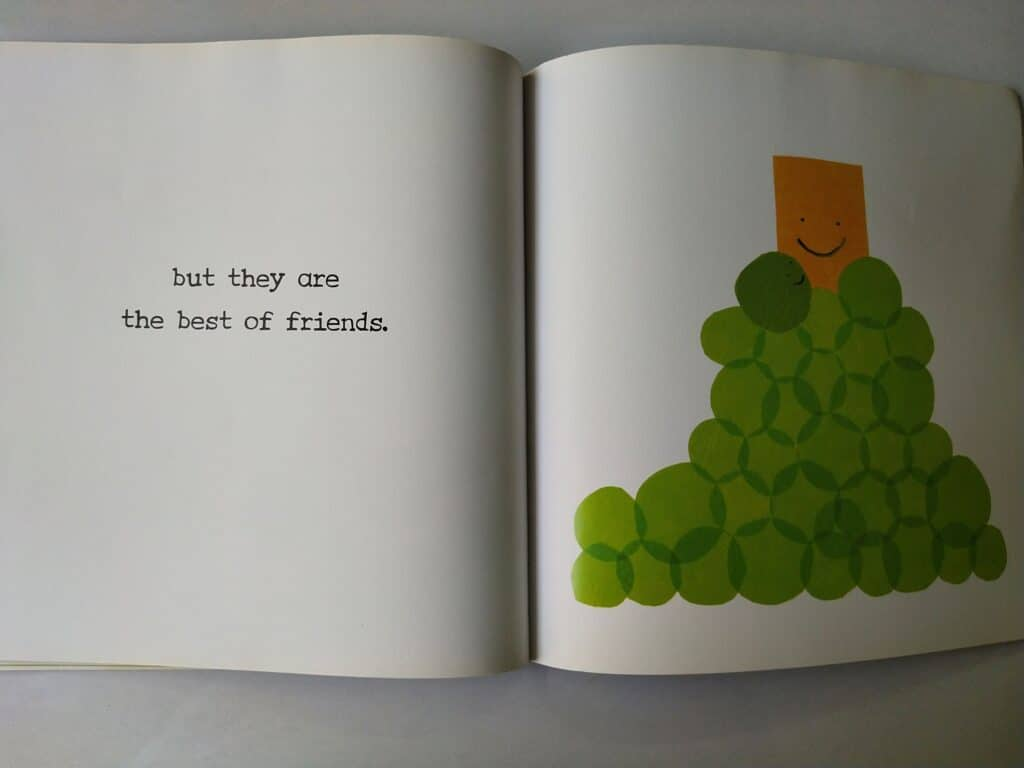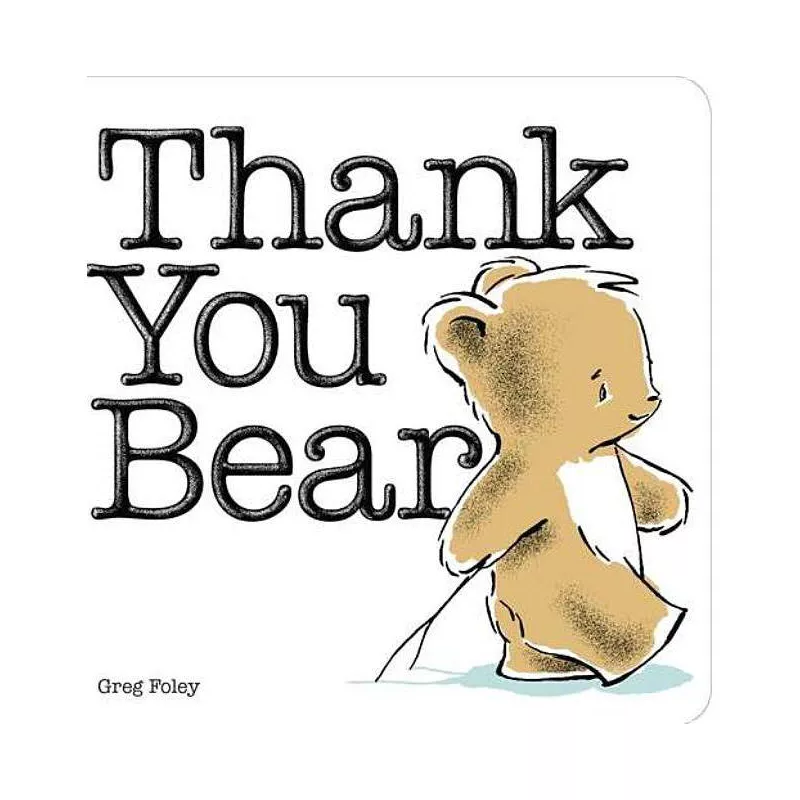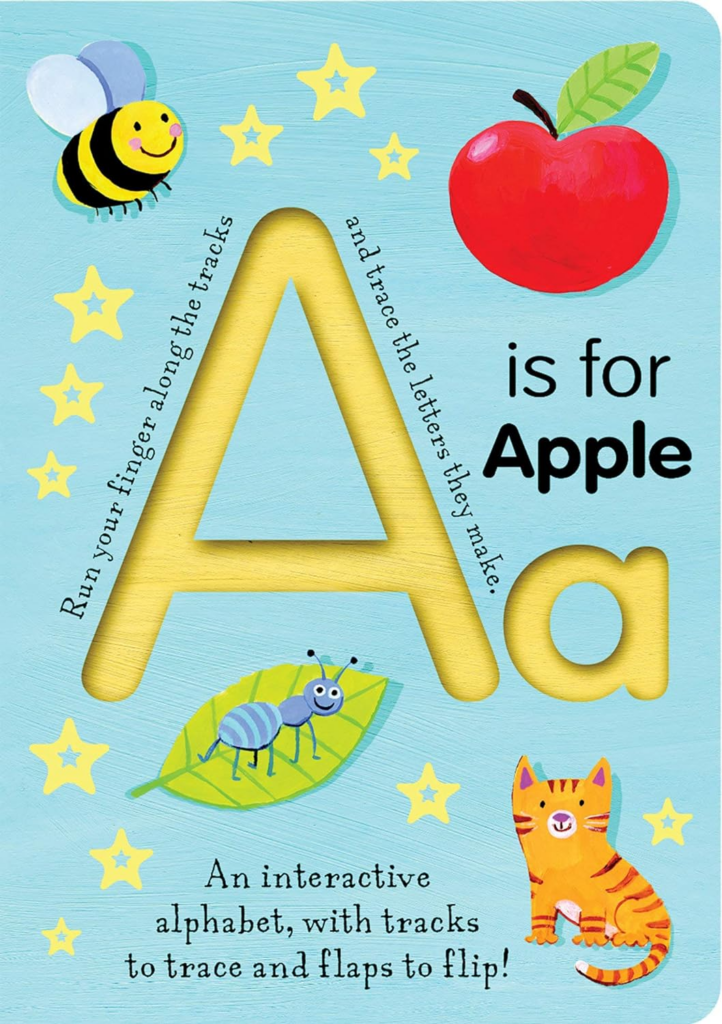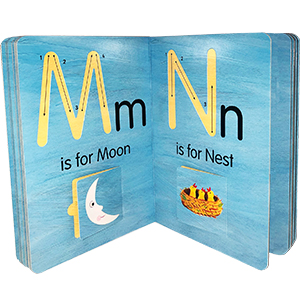All About Katie
Katie Chiaratti is a stay-at-home mom to two sweet boys, Teddy (age 8, with CVI and cerebral palsy) and Henry (age 2, climbing monster and giver of gray hairs). She has a BA in child development, a teaching credential, and a masters in education. Katie feels that connecting with other families in similar situations is exceptionally important, as well as a wonderful resource for helping Teddy to grow and learn. She hopes that some of these ideas will help you, too.

Favorite Books for CVI
Ideal books for CVI have:
- Solid backgrounds
- Realistic and simple photos or images
- Large easy-to-read lettering
Kids aren’t always drawn to the “perfect” CVI book, however, so be willing to follow your child’s lead. It’s much easier to adapt a book for vision than it is to manufacture an interest in reading.
Set-Up for CVI Success:
- Quiet area
- Reduced visual clutter (facing a blank wall, in a black pop up tent, tri-fold around the desk)
- Comfortable body (well supported so their focus is only on vision, especially important for our kiddos with cerebral palsy)
- Present the book in their preferred vision area using a slant board if needed (many CVI children have a lower field deficit and can’t see well directly below on a desk)
- Reduce glare from lights or sunshine
Freight Trains by Donald Crews
Clear and crisp images and low complexity backgrounds. Each car on the train is a solid color and great for learning and reinforcing colors as well as talking about parts of the train. The story is very simple but engaging.


So Big! (Sesame Beginnings) by Anna Jane Hays
CVI-friendly red Elmo draws your eye as he drinks from a cup, shakes a rattle, and says mamama! Baby Elmo pops out of the last page and says peekaboo! He’s so big, just like you! This board book has been a firm favorite since our son was very young.

Carrot and Pea, An Unlikely Friendship by Morag Hood.
We love this story about how Colin the Carrot is different! He can’t play the way the peas can, but he can do other things, and that’s just the way they like it. The pictures are simple and bright. The font is usually on a white background. We always discuss how it’s okay that Colin is different, and how that makes him special. Everyone is different!


The Happy Little Yellow Box: A Pop-Up Book of Opposites by David A Carter
Concepts like up, down, in, out, and inside and outside are demonstrated with the little yellow box. The box is bright and easy to find but the other illustrations are difficult to discern (see mouse on front cover–not CVI friendly). The movement of the box (slides up and down, pops out on a helicopter, raises up 3D) is ideal for CVI and catching their attention.


Bear finds a blue box and all the animals want to look at it and share why it isn’t so great. In the end, Mouse loves his gift. Simple illustrations and a simple story have made this one a favorite for many years. While the images are not realistic, my son absolutely adores this story and the animals are easy to find because they are colorful on the white backgrounds.

A is for Apple, An Interactive Alphabet
Each letter has two things listed, but one is hidden under the flap. When we first read this book, we skipped each flap until we were ready for more complexity. I like that the capital letter is big, indented so you can trace it, and yellow. The images are not realistic. The lettering is large and clear and the backgrounds are solid colored.


That’s Not My…. Series by Usborne
It’s too…fuzzy, scratchy, soft, squishy, squashy, glitter! Bears, cars, planes, fairies, tigers… these are repetitive and encourage exploration of textures. We have SO many of these books! Some of the backgrounds are too busy and the images are not always understandable for CVI. The solid black lines help to delineate the images and the texture is usually easy to find (the penguin has a red silky head in the image that stands out).


Don’t Push the Button! by Bill Cotter
This book is so silly! The big red button is on every page and you need to find it and push it! When you do… uh oh! The monster will change colors and multiply. You shake the book and scratch his tummy to get it back to normal. My son has loved his book since he was just a toddler. We PUSH the button and shakeshakeshake and UHOH along with the monster. If it’s too visually complex to find the red button, create your own or even buy one
I think a red push button that makes a silly noise or is recordable would be a great option for a phase 1 child to interact with this book!



DIY Personal Book
Create your own book all about your child. What is more meaningful than things that they know and understand? Here are two pages of Teddy’s Book! I used Google Docs, one photo and (very large) sentence per page, laminated them, punched holes in one side, and “bound” it with a pipe cleaner twisted through the holes. It says things like, “I am 5 years old.” “I like corn flakes.” “I live with mommy and daddy.” “I like cars.” All with photos that either I took or found online. Remember, real photos are often easier to understand than cartoon images or sketches.


Novelty is difficult for children with CVI, so when you introduce a new book, be prepared for it to be ignored or pushed away. Teddy often walks away after the first few pages or will ask to read one of his favorite books instead. We find that using funny noises and emphasizing silly parts of the book works best for our little guy and his love of silly sounds, and now that he is late phase 2 on the CVI scale, we have successfully managed to read a new book in one sitting. Once the book is more familiar, it becomes easier. Some of Teddy’s favorite books are not CVI friendly, but they align with his interests, and we read them over and over again.
Ideas for children who need real items with their stories:
If your child is still in need of real items with their stories you can accompany it with a story box. A story box is a box of real items in 3D that will support understanding of what is on the page. Story boxes allow the child to use those important compensatory skills to feel, smell and hear elements of the object that is in the story. Read more about Story boxes
More about creating your own story boxes:
You Can Do It! Tips for Families Who Are Just Getting Started
Tips for families to create tactile books and other literacy materials for young children who are blind or visually impaired, deafblind or who have multiple disabilities
What books does your child with CVI love?





